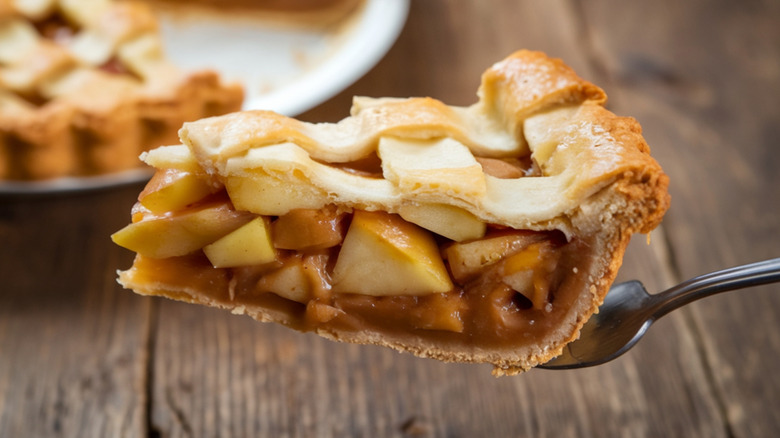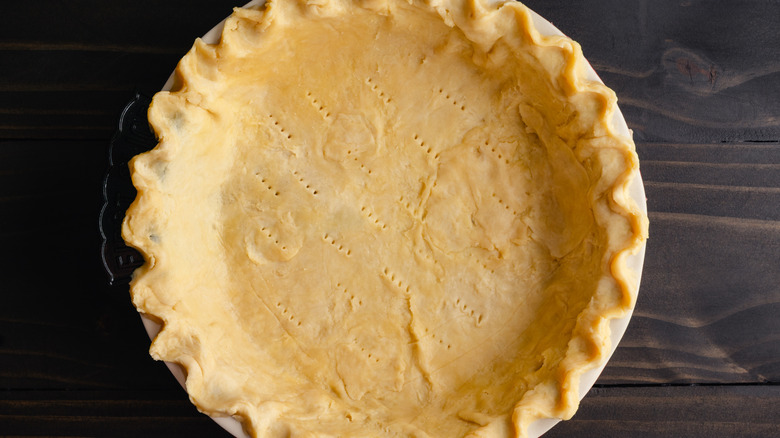Once You Make Pie Crust Like This, You'll Never Turn Back
As is the case with many pastries and desserts, baking a pie at home becomes increasingly difficult the more elements you make from scratch. This is especially the case when it comes to the pie's crust. While a recipe like a show-stopping lemon cream tart doesn't necessitate a homemade crust, a handcrafted dough proves to be an incredible upgrade compared to store-bought crust — especially when using a special technique called fraisage to do so.
We spoke with chef, product development specialist, and founder of Villa's Authentic Sauces, Vivian Villa, who gave us insight into the fraisage technique and how to use it to improve our pies. "Fraisage is a technique requiring handling the dough by hand (not the food processor as is the standard method) [and] rubbing the butter into long pieces into the flour," Villa explained. "When done correctly, the result is a pastry with visibly longer flakes that is light and even more tender than the standard method." This technique has been perfected by French bakers for decades — at least since the 19th century — and produces the buttery and flaky pie crust that many seek for this classic dessert.
The pros and cons of the fraisage pastry method
The fraisage technique gives your pie crust a supreme texture, and due to its simple ingredients and versatility, it is a handy method to become familiar with. "The ingredients for fraisage are the same as standard," Vivian Villa noted. "The ingredients are mounded onto a cold surface (granite is best); with the heel of your hand moving away from you, the butter is gently flattened into the flour. This process is done until the flour is incorporated and the butter is evenly distributed throughout the dough." Plus, the tender crust that results from the fraisage technique is great for just about any pie recipe you want to make.
However, one issue with the technique, as was alluded to us by Villa, is that it's quite time-consuming and can be difficult for novice bakers to do properly. "For beginners, I would recommend the food processor method with the 3:2:1 (flour, fat, water) ratio," Villa advised, "As it keeps handling to a minimum." So, if you're a new baker, and want to try a few basic pastry upgrades before attempting the fraisage technique, add a new fat to your dough recipe (Your pie crust has been begging for lard this whole time), and get ready to bite into the most tender and flaky texture.

